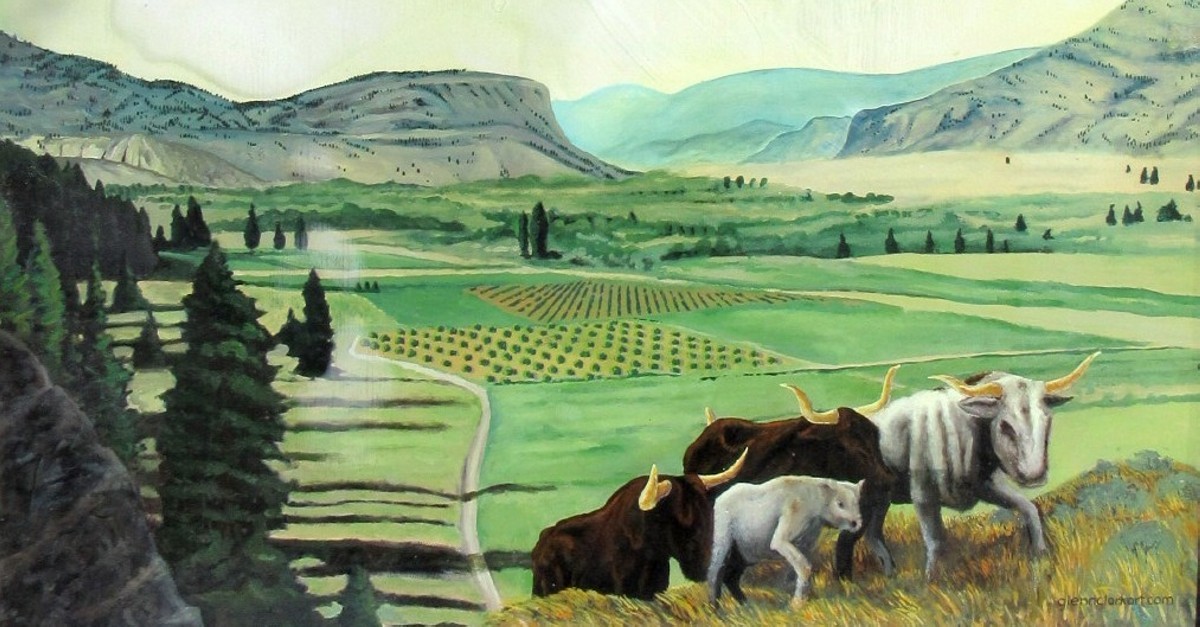The area, later known as Fairview, began as a small claim in 1887. By 1919, Fairview had become a ghost town. Little remains, the site of the Presbyterian Church, constructed at Fairview in 1899 was moved to Okanagan Falls and is affectionately known as the Blasted Church. The Fairview jail, the last remnants of Fairview was moved to the Oliver Museum in 1981. I have yet to find the old cemetery, though no headstones remain, the small iron fencing that surrounded children's graves is still there. The Okanagan Historical Society installed a pedestal with a commemorative plaque at the cemetery, that is my understanding.

Osoyoos is in the Okanagan Valley region of British Columbia and bordering Osoyoos Lake. It is known for its warm water and sandy beaches and attracts tourists from around the world.
Okanagan Desert is a semi-arid shrubland located in the southern region of the Okanagan Valley, centered around Osoyoos. It is the only semi-arid shrubland in Canada. Part of this ecosystem is referred to as the Nk'mip Desert by the Osoyoos Indian Band.
Osoyoos has a population of approximately 7,000 residents consisting mostly of retirees. Osoyoos is about 4.5 km north of the Washington State border. Oliver, the next town north, is approximately 21 km.

Osoyoos
"Sooyus" was the Interior Salish name for the "narrows" where an ancient Indian trail crossed beautiful Lake Osoyoos and, after the international border was surveyed, a Canadian port-of-entry customs house was built there in 1861.
The east-west Dewdney Trail, which passed through Osoyoos, was built to connect Vancouver merchants with flourishing gold-mining camps at Rock Creek and Wild Horse Creek.
When the South Okanagan was opened for settlement, long-horned Mexican cattle were ranched in the vicinity. To serve the diverse economy which sprang up: CPR rails were extended to Osoyoos in 1944 and, two years later, the Town of Osoyoos was incorporated. Today, it achieves impressive growth through agriculture, tourism and as a retirement community.
Caption: The Customs border crossing in Osoyoos. It came to Fruition in the mid-1800's. VV. H. Lowe and J.C. Haynes were but two< of the early customs agents at the border.

Oliver and Osoyoos
Located on historic trails used by Indians, fur traders and gold miners. Oliver and Osoyoos are today thriving communities which, over the years, have made dry land blossom. Even today, the perfumes of the Sonora desert permeate the air while snakes, scorpions and rare reptiles still live here.
Until the international boundary between the United States and Canada was agreed in 1846, The Okanagan Valley formed part of Oregon Territory, jointly shared by American and British interests.
But gold-mining brought settlers and, when the flowing bunch grass proved ideal for ranching, trail herding of livestock became an industry. In the early '20s, after World War I , a dam was built at the foot of McIntyre Bluff, a 40 km cemented "ditch" made available to Oliver and Osoyoos settlers the benefits of a gravity-fed irrigation system, which transformed 5,000'acres of Valley land into fertile orchards. (Until their trees bore fruit, growers earned fame for their ground crops, especially cantaloupe melons).
In 1952, 23 miles of the winding Okanagan River were straightened under a Flood Control Program and, from 1963 to 1973, a 30-lb pressure system was installed, to deliver water to the highest point of every approved orchard and vineyard.
The gold is long gone. The longhorn cattle and wild horses formerly a feature of this area have been replaced by modern breeds. With mechanization, farm life became easier. The development we see in this Valley today is the result of joint efforts by Salish Indians, fur traders, gold seekers, cattle ranchers, fruit and grape growers, their legacy a peaceful array of luxuriant orchards, green pastures and fine wines.